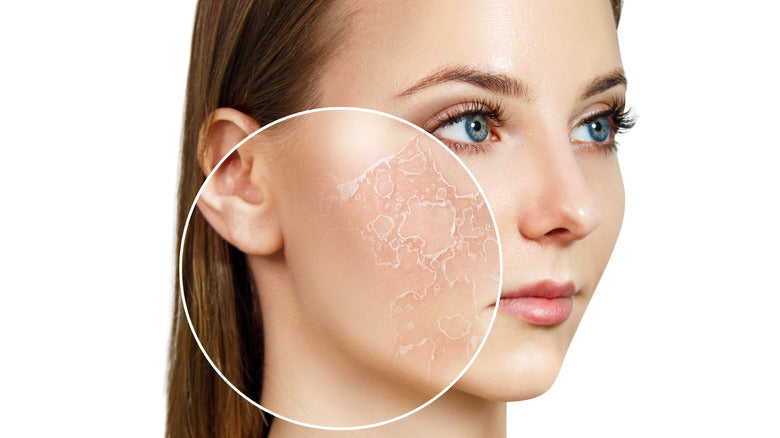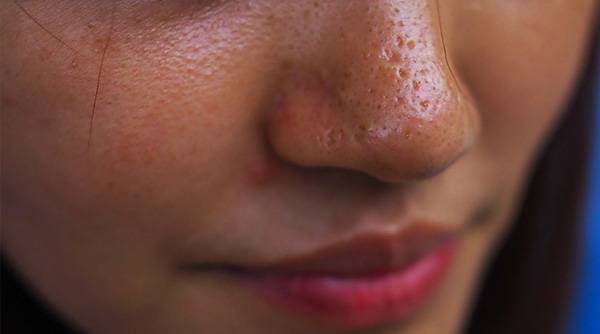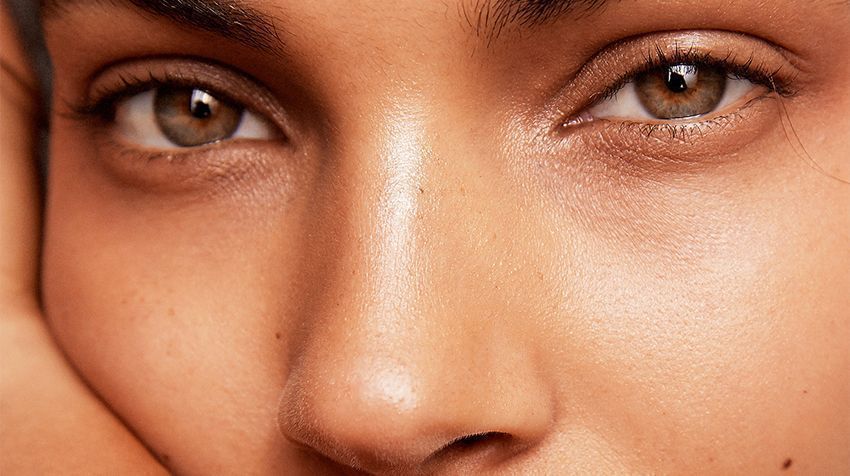Identifying your skin type is a critical first step in building a successful skincare regimen. Understanding whether you have dry, oily, combination, sensitive, or normal skin can significantly influence the products you choose and the routines you adopt. Just like understanding your body helps in maintaining good health, knowing your skin type can aid in maintaining skin health and achieving a vibrant, youthful look. Here, you will find out the answer of ‘What is Your Skin Type” delve into each skin type, their characteristics, and the specific care each one requires. Equip yourself with this knowledge and tailor a skincare routine that perfectly suits your skin’s unique needs.
Identifying Your Skin Type
Recognizing your skin type is crucial to tailor the perfect skincare regimen. Be it dry, oily, combination, normal, or sensitive, every skin type has unique needs. In this section, we provide an easy guide to identify your skin type, helping you understand its characteristics and specific care requirements, leading to healthier and radiant skin.
. Dry Skin: Signs and Symptoms

Understanding your skin type is the first step to personalized skincare. If your skin often feels tight, rough to touch, or appears flaky, you might have dry skin. Here are the key characteristics of dry skin:
- Rough, flaky, or peeling skin: Dry skin doesn’t retain enough moisture, leading to a lack of natural oils that keep the skin soft and supple. This results in skin flaking or peeling and feels rough to the touch.
- Tightness: Skin often feels tight, especially after cleansing or showering. This sensation can worsen in cold, dry weather or in air-conditioned spaces due to reduced humidity levels.
- Visible fine lines or cracks: Dry skin can accentuate fine lines and wrinkles, making them appear more prominent. In severe cases, the skin can even develop tiny, painful cracks.
- Redness or irritation: Dry skin is more prone to inflammation or irritation due to its impaired protective barrier. Red patches or a constant feeling of itchiness are common signs of dry skin.
- Dull, lackluster appearance: Unlike healthy, well-hydrated skin that has a radiant glow, dry skin can appear dull and lifeless. The lack of natural oils reduces the skin’s ability to reflect light, causing a lackluster appearance.
Knowing these signs and symptoms can help you identify if you have dry skin. It’s important to consult with a dermatologist for professional advice if you experience severe dryness or discomfort. They can provide personalized recommendations and treatments to help soothe and nourish your skin.
Related: Best Hydrating Moisturizers for Dry Skin.
. Oily Skin: Causes and Effects

Understanding your skin type is a fundamental step in proper skincare, and if your skin often appears shiny, feels greasy, or is prone to breakouts, you might have oily skin. Oily skin is typically characterized by an overproduction of sebum, an oily substance produced by the skin’s sebaceous glands, and understanding its causes and effects is key to managing it effectively.
- Excessive Oil Production: Oily skin is characterized by overactive sebaceous glands that produce excessive sebum, resulting in a noticeable shine or greasiness, especially in the T-zone (forehead, nose, and chin). This overproduction can be influenced by factors such as hormonal imbalances, genetics, diet, and climate.
- Enlarged Pores: Due to the excess oil, pores on oily skin often appear larger. The sebum combines with dead skin cells and gets trapped in the pores, stretching them out over time.
- Prone to Acne: The excessive sebum, along with dead skin cells, can clog the pores and create a breeding ground for acne-causing bacteria, leading to frequent breakouts, blackheads, and whiteheads.
- Shiny Complexion: One of the most visible effects of oily skin is a persistent shine or gloss on the skin surface, which can become more prominent throughout the day as oil accumulates.
- Resilience: A positive aspect of oily skin is that it tends to age better than dry skin. The natural oils keep the skin more moisturized, making it less prone to early signs of aging, like wrinkles or fine lines.
Managing oily skin involves a careful balance between controlling the oil and preserving the skin’s natural moisture. The right skincare regimen and lifestyle changes can help reduce excess oil, minimize breakouts, and promote healthier skin.
Related: Best Skincare Routine for Dry, Oily and Combination skin.

Combination skin, as the name suggests, combines aspects of both oily and dry skin types. It’s often marked by an oily T-zone (forehead, nose, and chin) while having normal to dry skin on the cheeks and around the eyes. Navigating the challenges of combination skin requires a nuanced understanding of its unique characteristics and needs.
- Varied Oil Production: In combination skin, oil production varies across different areas of the face. The T-zone tends to be oilier due to a higher concentration of sebaceous glands, which can lead to shininess, enlarged pores, and frequent breakouts. The cheeks and other areas may be dry or normal, displaying dry patches, tightness, or dullness.
- Balancing Act: One of the biggest challenges with combination skin is finding balance. It can be tricky to address the different needs of your skin without over-drying the dry areas or over-moisturizing the oily areas. This often requires using different products or techniques on different areas of the face.
- Fluctuations: The characteristics of combination skin can fluctuate based on factors like weather changes, diet, hormonal fluctuations, and the use of certain skincare or makeup products.
- Pore Size Variation: People with combination skin often notice larger pores on their nose or forehead and smaller pores on their cheeks. This is due to the varying oil production in these areas.
- Skin Sensitivity: Combination skin may also be more prone to sensitivity, as the skin barrier can be compromised in dry areas, making it more susceptible to irritants and allergens.
Caring for combination skin can be challenging, but with the right skincare routine that addresses both the oily and dry areas, it can be managed effectively. The key is to maintain balance, keeping the skin well-hydrated without exacerbating oiliness, and always tailor your skincare regimen to the unique needs of your skin.
. Sensitive Skin: Recognizing and Managing

Sensitive skin is characterized by heightened reactivity to external factors, often leading to redness, irritation, dryness, and a feeling of discomfort. Recognizing and managing sensitive skin involves understanding its triggers and providing the skin with gentle, calming care.
- Heightened Reactivity: Sensitive skin is hyper-reactive to environmental factors and skincare products. Common triggers can include harsh chemicals, fragrances, artificial colors, extreme temperatures, and certain foods. It reacts by developing symptoms such as redness, itchiness, burning, stinging, and tightness.
- Barrier Function Disruption: Sensitive skin often has a compromised skin barrier function, making it more susceptible to the penetration of allergens, irritants, and bacteria. This disruption can lead to skin conditions such as dermatitis, rosacea, or eczema.
- Flushes Easily: Sensitive skin often flushes easily, either as a reaction to irritants or in response to emotional factors like stress and embarrassment. The flushed skin may feel hot to touch and can be accompanied by a stinging sensation.
- Prone to Breakouts and Rashes: Those with sensitive skin are more prone to breakouts, rashes, and patches of dry, flaky skin. These symptoms can be triggered by a wide range of factors, from changes in weather and hormonal fluctuations to the use of certain skincare or makeup products.
- Requires Gentle Care: Sensitive skin requires a skincare routine that is gentle, hypoallergenic, and fragrance-free. It is crucial to avoid harsh chemicals and irritants, and always perform a patch test before introducing new products.
Understanding sensitive skin and its triggers is the first step towards effective management. By opting for gentle, hypoallergenic skincare products and avoiding known triggers, you can help to reduce flare-ups and maintain healthier, calmer skin
Related: Best Skincare Ingredients for Sensitive skin.
. Normal Skin: Characteristics and Care

Normal skin, often considered the ideal skin type, is well-balanced, neither too oily nor too dry, and generally blemish-free. Recognizing and maintaining normal skin involves a simple skincare routine that focuses on preserving its natural balance.
- Well-Balanced Sebum Production: Normal skin has well-balanced sebum production, meaning the skin is not too oily or too dry. The sebum or oil produced by the skin helps to keep it moisturized, while not leading to excessive shine or causing breakouts.
- Smooth Texture: One of the defining characteristics of normal skin is a smooth, even texture. The skin’s surface is typically free of blemishes and rough patches, and pores are not visibly enlarged.
- No Severe Sensitivity: Normal skin does not react strongly to skincare products or environmental factors, which is a common issue for sensitive skin. It typically does not experience redness, itching, or burning sensations when exposed to cosmetics or harsh weather conditions.
- Good Elasticity and Firmness: Normal skin tends to have good elasticity and firmness, resulting in a youthful and healthy appearance. It has a strong skin barrier function, which helps to prevent moisture loss and protect the skin from environmental damage.
- Requires Balanced Care: Even though normal skin is the least problematic type, it still requires care to maintain its health and balance. A regular skincare routine including cleansing, toning, moisturizing, and applying sunscreen is recommended. Occasional exfoliation can help to keep the skin smooth and radiant.
It’s important to remember that even if you have normal skin, you should not take it for granted. Environmental factors, aging, and lifestyle choices can all affect your skin’s health and balance. Regular skincare routine and a healthy lifestyle can help you maintain the condition of your normal skin.
Conclusion
Understanding your unique skin type is a fundamental part of nurturing your skin health. Acknowledge your skin’s specific characteristics and needs to develop a tailored skincare routine. Always choose products that suit your skin type to maximize benefits and avoid unnecessary skin complications. Incorporate regular skin check-ups to stay aware of any changes or potential issues. Remember, lifestyle plays a pivotal role in skin health, so maintain a balanced diet, stay hydrated, and get adequate sleep. Finally, irrespective of your skin type, sun protection is non-negotiable—wear sunscreen daily to safeguard your skin from harmful UV damage.


